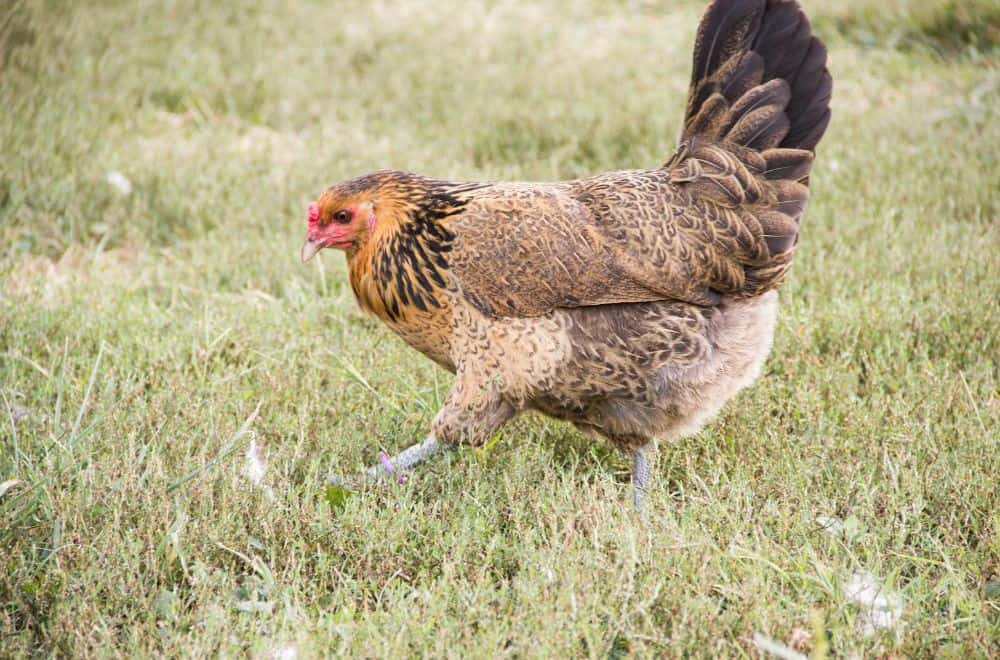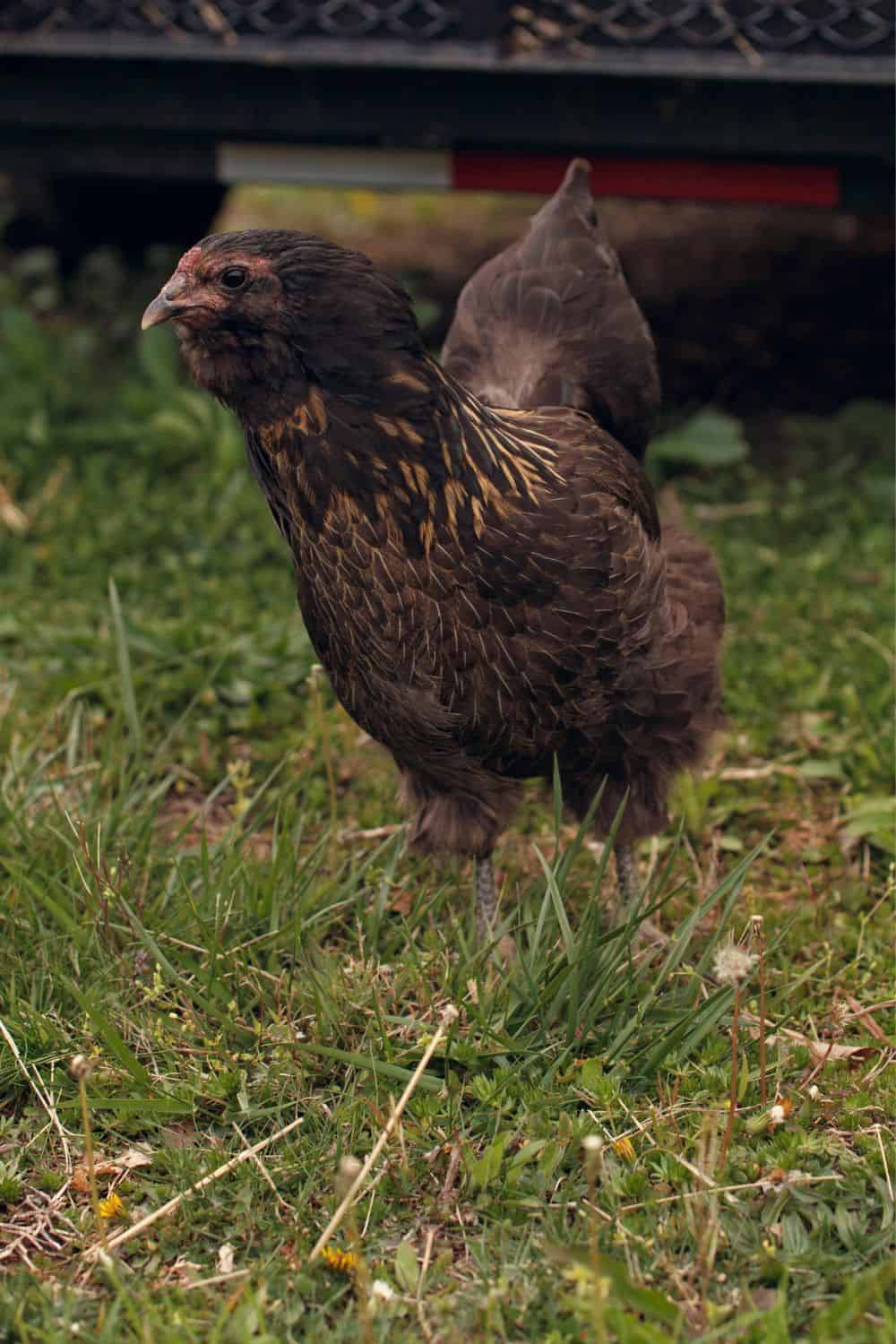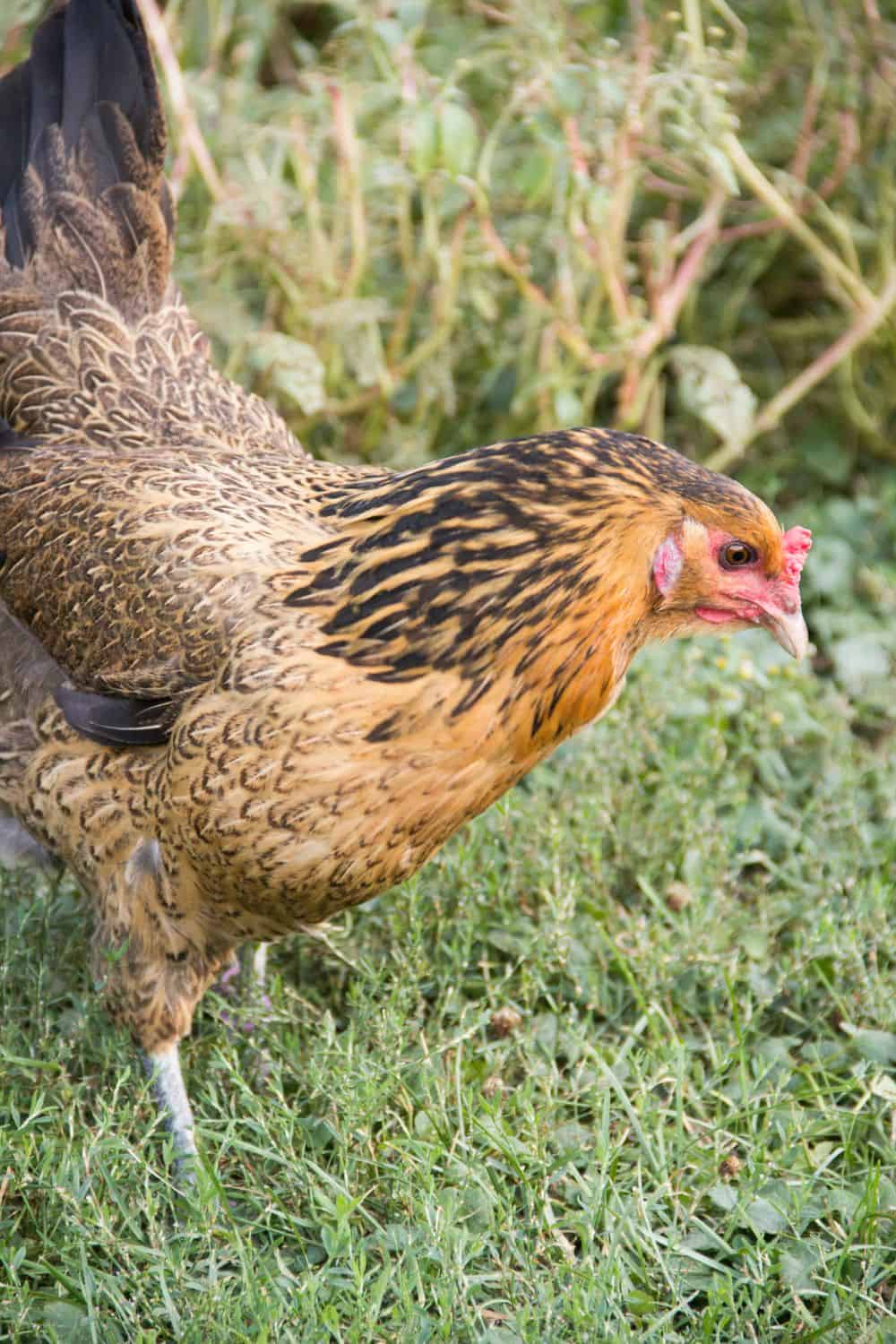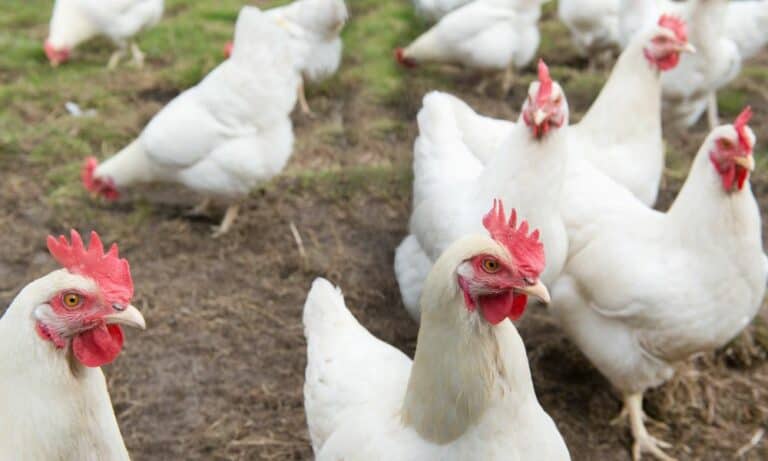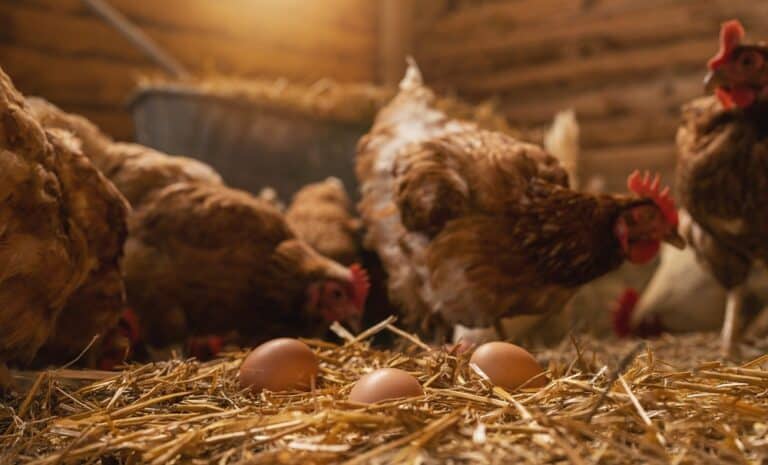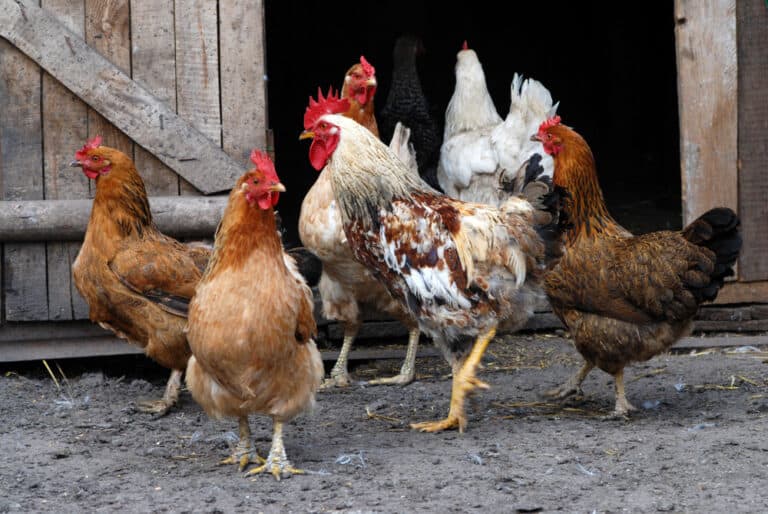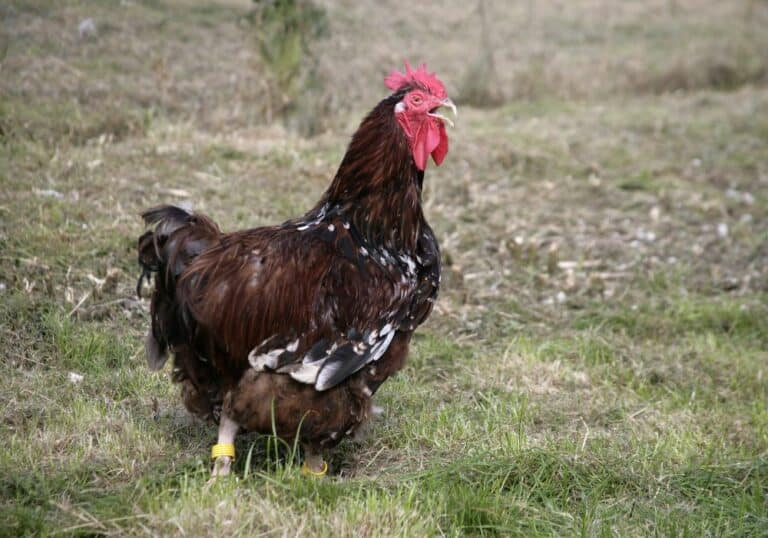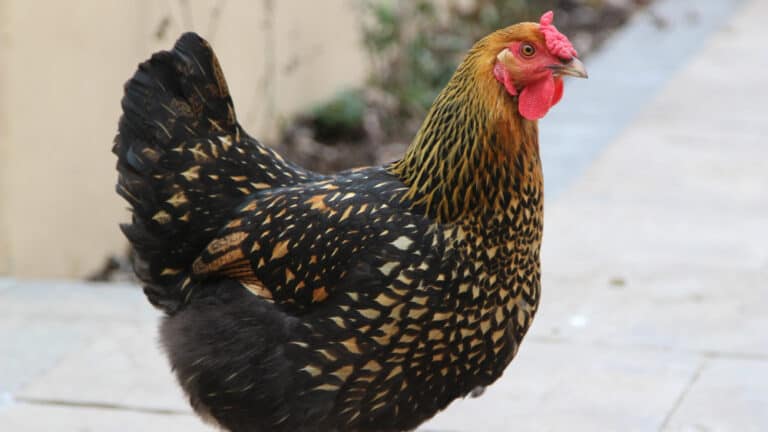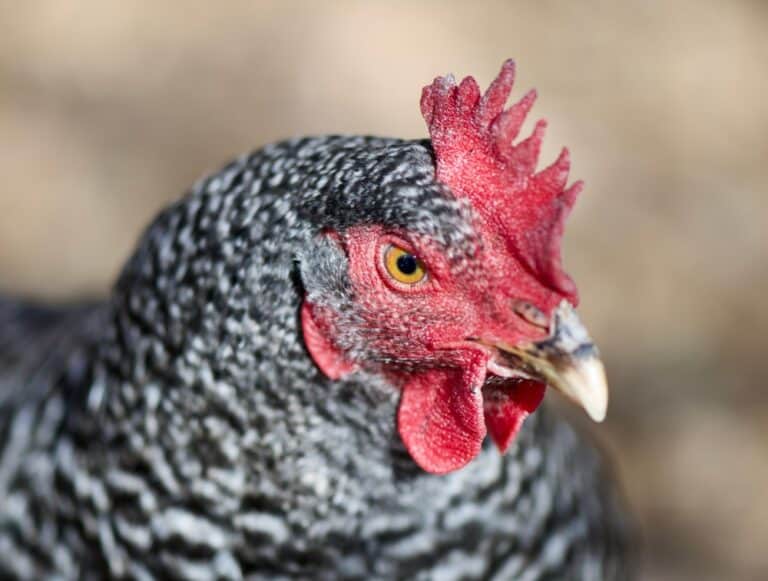A name like the Easter Egger chicken instantly piques our curiosity! Where did this chook come from? What does it look like? And most importantly of all, does it lay chocolate eggs?!
For answers to all these questions and more, you’ve come to the right place. We have everything you need to know about the Easter Egger chicken.
Ready to learn more? Let’s get started!
What is an Easter Egger chicken?
The first thing to know is that an Easter Egger isn’t a specific breed of chicken. It’s actually a name given to a hybrid or mixed-breed bird. But it doesn’t apply to any old hybrid.
Easter Eggers are chickens that result from breeding between a bird with a blue egg laying gene and one with a brown egg laying gene. It doesn’t matter whether it’s mom or pop that has the blue or brown gene.
In theory, the pairing doesn’t have to involve specific breeds or varieties either. But in reality, only two of the chicken breeds recognized by the American Poultry Association lay blue eggs. Those are the Araucana and the Ameraucana.
The ancestry of Easter Eggers
Araucana chickens hail from Chile. It’s not clear when the breed was first developed, but by early in the twentieth century Araucanas were a common sight across the country. And at that time, it was the only chicken in the whole world known to lay a blue egg.
That unique characteristic was the result of it carrying a special blue egg gene – or oocyan gene, to give it its scientific name. But quite why the Araucana has this gene is the subject of much debate.
Some naturalists believe it developed from the chickens breeding with wild birds called tinamous. Others think it was the result of a retrovirus that altered the chickens’ DNA. And still others think it was a genetic mutation.
Araucanas have other distinctive features too. They have long tufts of feathers on their ears. And in North America, all Aracaunas are rumpless – in other words, they have no tail or tailbone. (In the UK and Australia, the breed can be rumpless or have a tail.)
Ameraucanas were bred from Araucanas. Breeders aimed to keep the blue egg gene, but to remove the genes that made the birds rumpless and gave them tufted ears. Those latter genes are known as “lethal alleles”, meaning they are harmful to the chicken.
The American Standard of Perfection – the breed registry for American poultry – recognizes eight different color varieties of Ameraucana. They can be brown red, buff, wheaten, silver, white, blue, blue wheaten or black.
What does an Easter Egger chicken look like?
An Easter Egger, remember, is the result of breeding between a bird with a blue egg gene and a bird with a brown egg gene.
The parent supplying the blue egg gene will almost certainly be an Araucana or Ameraucana chicken. But there are loads of different chicken breeds that lay brown eggs.
All this means that there’s a lot of variety in the heritage of Easter Eggers. And that in turn means one Easter Egger can look quite different from another.
They can have pretty much any color plumage. Their earlobes can be red or white. Some have tufted ears, muffs or beards, while others don’t.
There are, however, a few characteristics that many Easter Eggers share. They often (though not always) have legs that are greenish in color. And their wattles – the fleshy areas on either side of their throats, just behind their beaks – are generally small. Some have no wattles at all.
They also often have what’s known as a pea comb. The comb is the fleshy area on top of the chicken’s head that helps to regulate the bird’s temperature. And a pea comb has a specific appearance.
It’s a medium sized comb that gets its name from its resemblance to a row of peas. It has three ridges that run from the back to the front. And the central ridge is slightly higher than the outer ones.
Standard adult males usually weigh around 5 pounds, while adult females are a pound or so lighter. It’s also possible to get bantam Easter Eggers. Bantam roosters weight around 30 ounces, while hens are about 26 ounces.
But interesting as these features might be, they’re not what Easter Eggers are best known for. As you might expect from the name, that’s their eggs! So what’s so interesting about them?
Are Easter Eggers good for eggs?
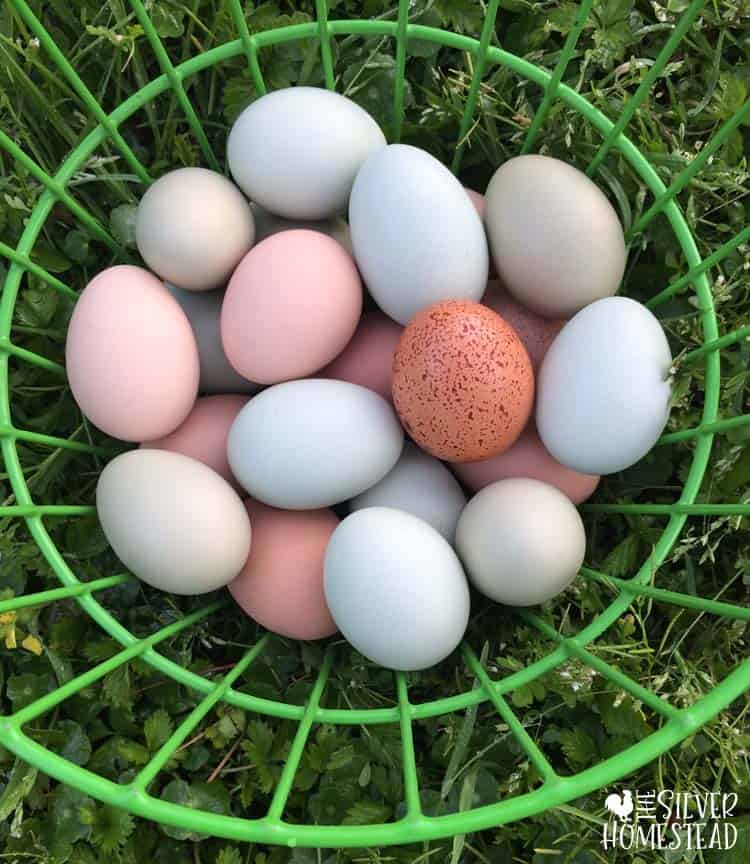
Easter Eggers tend to be very good layers. Hens usually start to lay at around 20 to 25 weeks of age, although some can take longer.
They’ll produce an average of four eggs a week, or about 200 eggs a year. The eggs are medium to large, generally weighing around 21 ounces.
The rate of egg production will usually slow down over the colder months, but won’t stop completely. Making sure the coop is nice and warm, and feeding your chooks extra protein and fat over winter will help them keep the eggs coming.
In fact, providing your hens with plenty of protein and calcium will help optimize egg laying throughout the year. Happy hens are the best layers too, so try to avoid them becoming stressed.
In good news for those hoping for lots of eggs, Easter Egger hens rarely go broody. In other words, they don’t take a break from laying to sit on the eggs they’ve laid already.
If you do have a broody Easter Egger, try keeping her away from the nesting boxes for a couple of days. That will usually resolve the issue.
If, on the other hand, you want to breed some cute Easter Egger chicks, you’ll probably need to place the eggs in an incubator.
What color eggs does an Easter Egger hen lay?
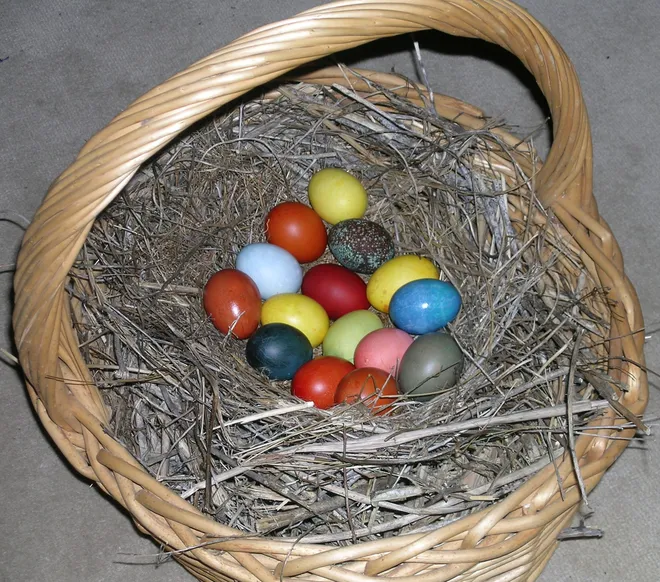
We’ve already heard that Easter Eggers are bred from chickens with different egg color genes. So what does that mean for the eggs produced by Easter Eggers themselves?
The short answer is that they can be pretty much any color at all! Some are shades of blue or brown. But you can also find Easter Egger chickens that lay pink or pale yellow eggs. It’s for this reason that you may also hear Easter Eggers referred to by the nickname of “Rainbow layers”.
But that doesn’t mean that you’ll get different colored eggs from the same hen! The color of the eggs each hen will lay is determined by her own genetic makeup.
So if you want a rainbow of eggshells, you’ll need a whole flock of Easter Eggers.
How to tell If your Easter Egger is a hen or a rooster
If you want your chooks to lay eggs, one thing you need to know for sure is that they’re girls!
It isn’t always easy to tell Easter Egger hens from roosters, especially when they’re young. But there are some things to look out for:
- Male Easter Eggers tend to have different colored feathers on their heads and necks. Their coloring is often patchier too, while that of hens is more even. Roosters’ feathers are longer and pointier than the rounded feathers of hens. And roosters will also grow “sickle” feathers – long, curving feathers at the tops of their tails.
- Combs and wattles. Roosters tend to have redder and larger combs and wattles than hens.
- Roosters usually have slightly thicker legs than hens do. And as they mature, they may develop spurs – thornlike protuberances on the backs of their legs.
- Boys will be boys! Roosters tend to be more inquisitive and generally bolshy than hens, particularly as they get older. Loud crowing is a big hint. And trying to mount another bird is a sure-fire sign that you have a rooster!
Are Easter Eggers good chickens to have?
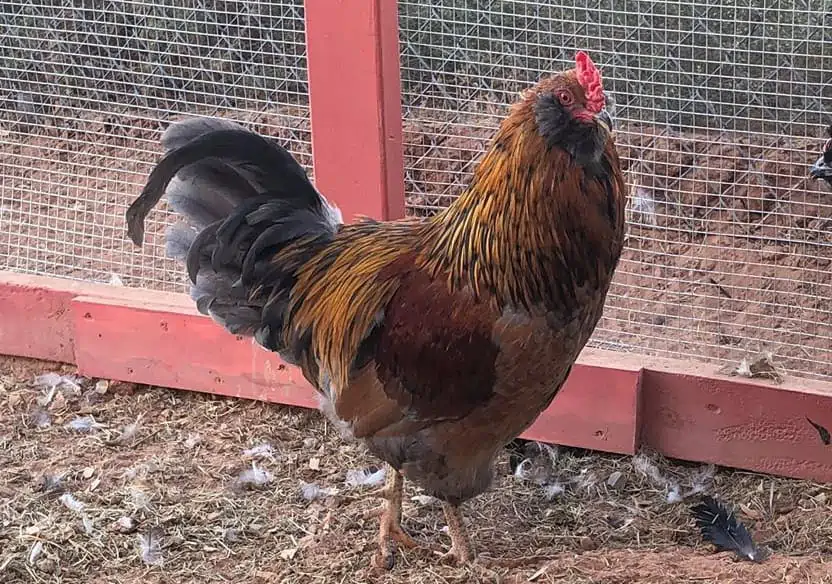
Yes! Easter Egger hens are a great choice for egg laying. And you’ll get some pretty colored eggshells into the bargain.
They tend to chatter quietly, except if alarmed by the presence of predators. So they’re a good choice if you have near neighbors that you need to avoid disturbing!
Both sexes have friendly and curious temperaments too, making them a pleasure to keep. They’ll often follow you around the yard, looking for titbits. And they’re gentle too, willing to eat from your hand or sit on your lap. All this means they can also be charming pets for children.
Their gentleness, though, does mean they can be bullied by more aggressive breeds. So if you’re planning to keep Easter Eggers in a mixed flock, keep an eye on them. They’ll do best with other mild-mannered birds like Cochins or Sultans.
Because they’re a hybrid, they’re not recognized as a breed by the American Poultry Association. That means that – however beautiful they are – they won’t be able to compete in shows. So if you’re looking for a chicken to take part in exhibitions, they won’t be the right choice.
Are Easter Eggers healthy?

Easter Eggers benefit from a broad gene pool, so aren’t known for any particular health problems.
As with all chickens, though, they can be vulnerable to parasites like mites or lice. Those are particularly likely to be an issue for Easter Eggers with muffs or beards. Check their feathers regularly so you can treat any infestations at any early stage.
Some chickens also suffer from a condition called “cross beak”, also known as “scissor beak”. This is when the top and bottom of the beak doesn’t align properly. And depending on how severe it is, it can prevent the chicken eating and drinking enough.
Nipple waterers will help chickens with cross beak get sufficient refreshment. But some birds may need help from you to make sure they’re getting enough food.
The good news is, with the right support, any chooks with cross beak can still live a long and happy life. As it’s a genetic condition, though, it’s best not to breed from those birds.
The average lifespan for an Easter Egger is between 5 and 8 years. Some, though, live far longer. We’ve heard reports of Easter Eggers living to the grand old age of 13!
Tips for keeping Easter Egger chickens
Easter Eggers are quite hardy birds, and will generally do well as long as you keep them supplied with the essentials. That’s plenty of food and fresh, clean water, as well as shelter.
Their feed requirements are the same as for other chickens. Chicks will need a higher protein diet than mature birds.
When it comes to space requirements, they’ll need about 4 square feet of coop space and 8 to 10 inches of roosting space per bird. Nesting boxes measuring a foot on either side will work well. And a good rule of thumb is one nesting box for every three hens.
They’ll do best if left to roam free-range. And they’re good foragers, finding grubs and greens to supplement their diet.
If you do confine them, make sure they have plenty of room – at least 8 square feet per bird in an outdoor pen.
And their enquiring minds will need to be kept entertained! Perches, dust baths, leaf piles, and a quiet space will all help keep them happy and healthy.
How to buy Easter Eggers
Easter Eggers tend to be fairly economical chickens to purchase. They’re usually less than $5 a chick – which hardly seems right for a chicken with so much personality and pizazz!
In the US, you’re most likely to find them available in hatcheries between April and June. Note that some hatcheries will have minimum purchase requirements.
The Egg-cellent Easter Egger
That brings us to the end of our look at the Easter Egger chicken. These charming chooks might not officially be a real breed. But their friendly personalities and the excellent egg-laying capabilities of the hens have made them popular across America.
If you’re thinking of keeping Easter Eggers – and why wouldn’t you?! – they’ll need much the same care as any other chicken. Give them good shelter, room to roam and keep themselves entertained, a balanced diet and fresh, clean water on demand.
The result will be happy, healthy chickens – and lots of beautiful eggs!

